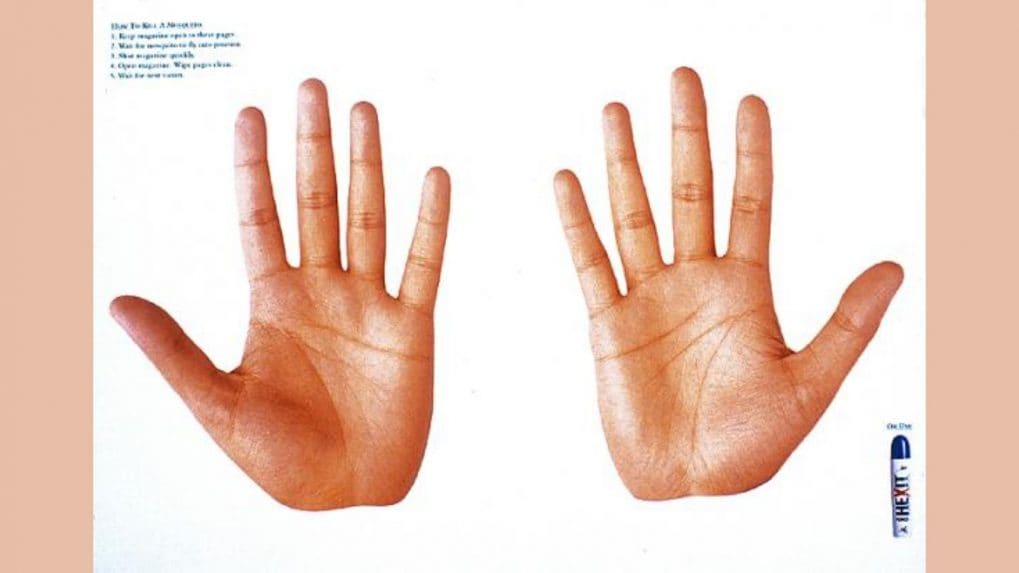Digital
Why OpenAI is hiring 100 ex-bankers: Inside the ChatGPT-maker's secret project to automate Wall Street's grunt work

A magazine features the palms of two hands. On the right side corner is the photograph of a mosquito repellant brand ‘Hexit’ and on the upper left hand side corner, there are instructions on ‘How to kill a mosquito’.
The interactive ad, released in 1996, was the first from India in the print category to receive a Gold Lion at the Cannes International Festival of Creativity.
Genesis
Ajay Chandwani, who was the Director of Lintas for 17 years, established its subsidiary SSC&B Lintas and took up the position of its President. The subsidiary handled prestigious brands such as Tata Motors, Hyundai, Mercedes-Benz and German pharmaceuticals company Hoechst Pharmaceuticals which manufactured a mosquito repellent brand called Hexit.
The genesis of the Hexit ad came from the insight that when a mosquito is hovering around a person irrespective of the place, the medium that one commonly reaches out to is a newspaper or a magazine.
Chandwani said that they had seen at least two of their own colleagues shut the magazine they were reading when they heard the mosquito hovering, in a bid to quash it.
Hoescht, which did not have any over-the-counter (OTC) outlets, and lacked good distribution, was facing competition from brands like Reckitt’s Mortein and Godrej Consumer Products Limited’s Hit. Chandwani recollected that there were also other cheaper brands that were well-established.
Hence, the brand decided to go with the print medium, something the agency was good at. The other reason was that newspapers were very expensive and it was not possible to challenge the category leaders given the budget. Magazines were chosen to place the ad in order to create a greater impact.
Ryan Menezes, Creative Director, Art Director and Copywriter at SSC&B Lintas would take boring products or categories and try to make it interesting to the key audience. Menezes’ idle doodle for the mosquito repellent brand caught the eye of one his colleagues, Vishal who then alerted the account executive Sameer Goswami who was handling the account.
Goswami was blown away by it and urged Menezes to mock it up in order to pitch it to the client. Menezes then reached out to photographer Sanjeev Angne to shoot his hands. Next, Menezes mocked up the ad in a magazine. Then, it was presented to the client, who approved it without any further thought.
Chandwani added, “The idea was that there are many ways to kill a mosquito. In this case, a mosquito comes into position. Then, shut the magazine with a bang. And if you fail, on the right side at the bottom, it says, ‘use Hexit’.”
Deepak Raghunathan and P N Purandare were the account supervisor and client’s supervisor respectively for the campaign.
The mid-1990s was also a period when film campaigns were beginning to find their place in the ad industry. Menezes, who came across a lot of beautiful print work back then wanted to better that, and use the medium in a way that had never been used before.
“This was a first; an interactive print ad that literally used the magazine itself to engage the viewer,” he stated. Every work brings with itself an inherent challenge which requires skill and precision to solve it. In this case, it was how to design the ad without detracting from its core idea.
The ad saw the light of day in 1996 and received stupendous response. Chandwani entered the ad in the Cannes Lions International Festival of Creativity and it stood out with a Gold Lion. This also gave heightened visibility to the German pharmaceuticals company.
The campaign also won a Bronze at the Clio Awards, and secured first place at The Mobius Advertising Awards, an international competition which recognises breakthrough work in the ad and design categories.
Menezes credits the ad for its simplicity and interactivity, where viewers mentally squashed the mosquito. He said, “There was also the element of a witty twist on a dry subject, and with the usage of hands, people could relate to it instantly.”
Despite bagging prestigious accolades for its precise art direction and creativity, the print ad’s memory is very faint in the advertising circle or is not counted in the list of iconic ads.
After 1996, there was a six-year dry spell India experienced, which was broken by Ogilvy & Mather who bagged a Silver Lion for a Fevicol bus ad. According to Menezes, the media focused on wins at other award shows and ‘How to kill a mosquito’ became an isolated milestone.
He said, “India’s focus on radio and TV media made global firsts like this one less referenced or cited, so it gradually slipped from collective memory.”
In a wide-ranging interview with Storyboard18, Sorrell delivers his frankest assessment yet of how the deal will redefine creativity, media, and talent across markets.